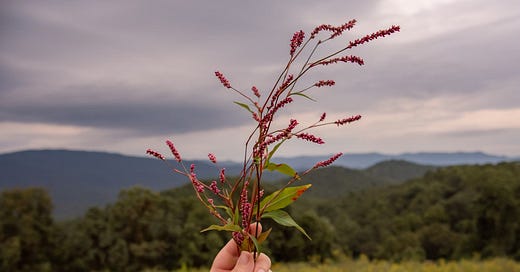Herbal medicine, also called botanical medicine or phytomedicine, refers to using a plant's seeds, berries, roots, leaves, bark, or flowers for medicinal purposes. Herbalism has a worldwide, long tradition of use outside conventional medicine and is becoming more mainstream. Along with improvements in analysis and quality control, advances in clinical research show the value of herbal medicine in treating and preventing disease.
Scientists who investigate herbal medicine are confounded by which specific ingredients (compounds) in a particular herb are actually working to treat a condition or illness. This is because whole herbs contain many ingredients that work together to produce a beneficial effect. Many factors determine how effective an herb will be. For example, the type of environment (climate, bugs, and soil quality) in which a plant grows will affect it, as will how and when it is harvested and processed.
Herbal medicine is used both as a preventative as well as to treat many conditions, such as allergies, asthma, eczema, premenstrual syndrome, rheumatoid arthritis, fibromyalgia, migraine, menopausal symptoms, chronic fatigue, irritable bowel syndrome, and cancer, among others. One study found that 90% of people with arthritis use alternative therapies, such as herbal medicine. But, since herbal medicines can potentially interact with prescription medications and even worsen some medical conditions, it is best to take herbal supplements under the guidance of a trained provider or to consult with your doctor or pharmacist before taking herbs.
The use of herbal supplements has increased dramatically over the past 30 years. Herbal supplements are now classified as dietary supplements. That means herbal supplements can be sold without being tested to prove they are safe and effective. Or so “they” say . . .
(But now is not the right time to go down THAT road!)
Most herbal supplements sold in stores and professional offices are purchased from source manufacturers. These are policed here in Canada by Health Canada to oversee good manufacturing practices and regulate labelling. Approved products should carry an NPN (Natural Product Number). An NPN on a product label signifies that Health Canada has assessed the product for safety, quality, and efficacy and has approved it for sale in Canada.
Although single herbs can be used quite effectively, practitioners often use herbs together because the combination is more effective. Practitioners who make their own (non-NPN) formulas and products must take many factors into account when recommending their herbs and medicine formulas, including the species and variety of the plant, the plant's habitat, how it was stored and processed, and whether or not there are contaminants (including heavy metals and pesticides).
Many times, people new to herbs get excited about learning and using herbs. They go out and buy all kinds of books, a lot of dried herbs, bottles and preparation supplies, or they wildcraf.t (gather herbs, plants, and fungi from the wild). They have their cabinets, refrigerators, and closets full of the things they’re making and trying. They’re giving stuff away to everyone they know and trying to make everyone healthy through herbs all at once!
That initial passion can be fun and exciting. There is truth and life in it. But then sometimes, that passion starts to wane little by little. Why is that? The reasons are different for everyone but for most, it’s because the herbs didn’t always work.
Not work!?
One of the main factors to consider is the quality of the herb or herbal product. The quality of herbs you’re using will make a big difference when it comes to whether or not your herbal choice will have a healing effect on the body. If herbs are old, not dried properly, harvested at the wrong time, prepared incorrectly, or come from a manufacturer that does not concern itself with providing a high-quality product, the medicine won’t be as effective! See my earlier article from September 2023 entitles “Supplement Basics” https://dorothyturner.substack.com/p/supplement-basics
Let’s investigate this further in Part 2, coming soon . . .
Photo by Aligail Ducote_ Unsplash.com





